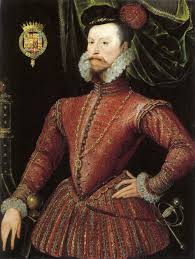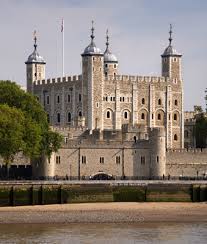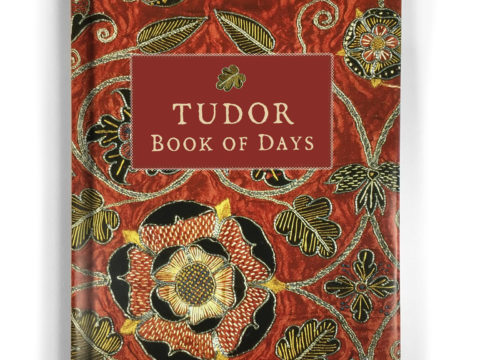Katherine Grey: Life Story
Chapter 12 : The Queen's Prisoner
That summer, the Court progressed through the eastern counties, arriving in Ipswich on 5 th August 1561. That night, Katherine confessed her pregnancy to a lady by the name of St Loe. The identity of this lady is disputed. Biographers of Bess of Hardwick usually assume it to be her. This would seem a perfectly reasonable proposition – as noted earlier, Katherine was the godmother of Bess’ daughter by her second marriage to William Cavendish. Katherine’s biographer, Leanda de Lisle, however identifies St Loe (or Sentlow) as Bess’ sister-in-law. Whoever the recipient of Katherine’s confidences was, she was not prepared to get involved.

The next day, Katherine sought out Lord Robert Dudley, and confessed all. Lord Robert agreed to be ‘a means to the Queen’s Highness’ and told Elizabeth the whole tale. Elizabeth was incandescent – as she would always be when secret marriages were revealed. Whilst the main thrust of her anger was in Katherine’s threat to the succession, any hint of immoral behaviour at her court reflected badly on her, and gave fodder to the gossips who speculated about her behaviour with Dudley.
Katherine was immediately arrested and sent to the Tower, and Hertford recalled from Europe.
Orders were given to Sir Edward Warner, the Lieutenant of the Tower, to question Katherine strictly. Warner had been Lieutenant during the brief reign of Lady Jane Grey, and he must have regretted seeing her sister brought to the Tower. He was also detailed to find out who had known about the secret match and to tell Katherine that her only hope for mercy was to tell the complete truth.
Hertford, who had returned as commanded, was arrested when he docked at Dover, and despatched to the Tower as well.
Over the succeeding weeks, the couple were interrogated numerous times by the Privy Council, as was Katherine’s step-father, Adrian Stokes, who had been involved in the early discussions between Hertford and Frances about a possible marriage. Their accounts of their courtship, betrothal and marriage did not tally entirely, particularly in that Hertford did not recollect Frances ever having drafted a letter to the Queen – although, of course, he may not have known of it. Hertford’s mother, Anne, Duchess of Somerset distanced herself from her ‘ unruly child’ with a letter to the Queen protesting her own loyalty.
The couple remained in the Tower, forbidden to have contact. Katherine delivered a son on 21 September 1561. He was christened Edward, for his father and grandfather, and a couple of the Tower officials served as his god-parents. Elizabeth, further enraged by the birth of a son to her potential heir, kept the couple in prison.

Whilst this seems harsh, they had, in fact broken the law – a Statute of 1536 had forbidden the marriage of a member of the royal family without the sovereign’s permission. Elizabeth was making quite clear that her personal preference for the succession was the traditional route of primogeniture, which would put Mary, Queen of Scots’ claim first, but she would not make any official declarations on the topic. Elizabeth also believed that there was more to the matter between Katherine and Hertford than love-sick youth, hinting that some of her Councillors were behind the match.
In the outside world, Cecil, and Elizabeth’s other Councillors were pushing for settlement of the succession by a Parliamentary act. For Elizabeth this was anathema – to suggest that the succession be laid down by Parliament was to suggest that the sovereign answered to Parliament, rather than the reverse. For this reason, if no other, she would always prefer the claim of the Queen of Scots – above all, monarchs should stand together to enforce their rights.
With this level of pressure on her, Elizabeth was determined to undermine Katherine’s claim – showing her as the mother of a bastard child would certainly not do her credibility any good. On 31 st January, 1562, an Ecclesiastical Commission was set up, under Matthew Parker, Archbishop of Canterbury, and the details of the couple’s union examined.
What constituted marriage was not absolutely clear-cut. Prior to the Reformation, the general view was that consent, a statement that the couple were marrying or planning to marry, plus consummation was sufficient, provided both parties either agreed they had consented, or there were witnesses to the promise. The Book of Common Prayer adopted in 1559 required banns to have been read on at least three Sundays, or a licence to have been given by the Archbishop to obviate the need for banns, but this irregularity did not necessarily invalidate the match.
In this case, much was made of the fact that no witnesses could be produced – Jane Seymour was dead, and the couple had not bothered to find out the name or address of the priest who had officiated. If any official efforts were made to track him down, they failed, either for lack of rigour or because he preferred to avoid the role of scapegoat. The Commission, therefore, in a decision that can hardly have come as a surprise to anyone, in view of the Queen’s attitude, declared the marriage invalid on 12 th May 1562, and the baby Edward as illegitimate.
Lady Katherine Grey
Family Tree




